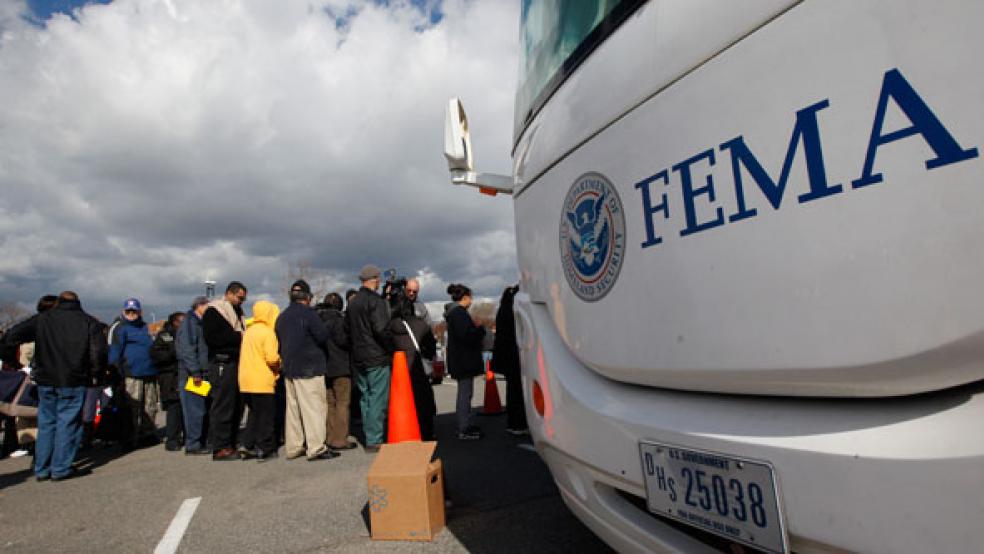Up to $250 million of the $1.4 billion that the Federal Emergency Management Agency (FEMA) paid to victims of Hurricane Sandy may have been improperly issued, according to a report this month from a federal watchdog.
The Department of Homeland Security’s Office of Inspector General found that FEMA doesn’t have any system in place to verify that applicants for assistance don’t have other insurance coverage. Out of the 182,900 applicants that submitted claims for damages from Sandy, more than 29,000 may have already had private home or car insurance, leading to the possibility that these were duplicate or fraudulent claims, the watchdog report said.
Related: FEMA Wasted Billions on Administrative Costs
The report outlines four different reasons why applicants with private insurance may have applied for FEMA money, and not all of them involve cheating the government. They may have had insurance but not flood insurance, or they may have had too little insurance coverage. Some filers may not have known the rules about submitting claims to both FEMA and their insurer. Others were knowingly committing fraud.
At the same time, the fraud rate might even be higher than detailed in the report because the inspector general determined its numbers using the National Insurance Crime Bureau, but participation in the Bureau by insurance agencies is voluntary and not all companies share their information. “Other than the National Flood Insurance Database, FEMA does not have a reliable tool to verify insurance coverage,” the report said.
All applicants for FEMA assistance are told that any false statements they make in their claims are against both federal and state laws, but the lax regulations make FEMA an easy and potentially tempting target for crooks.
The inspector general made three recommendations to FEMA: Clarify the possible consequences of falsifying claims or omitting information on applications, develop or use a comprehensive database to determine whether an applicant has private insurance coverage and review past payments that have a high risk of being incorrect in order to recoup any funds that shouldn’t have been paid.
Related: FEMA Still Doesn’t Know Where Its Money Is Going
FEMA said that it would work to implement the necessary changes. The agency emphasized that until a comprehensive database is put into place, insurance verification will remain a challenge.





